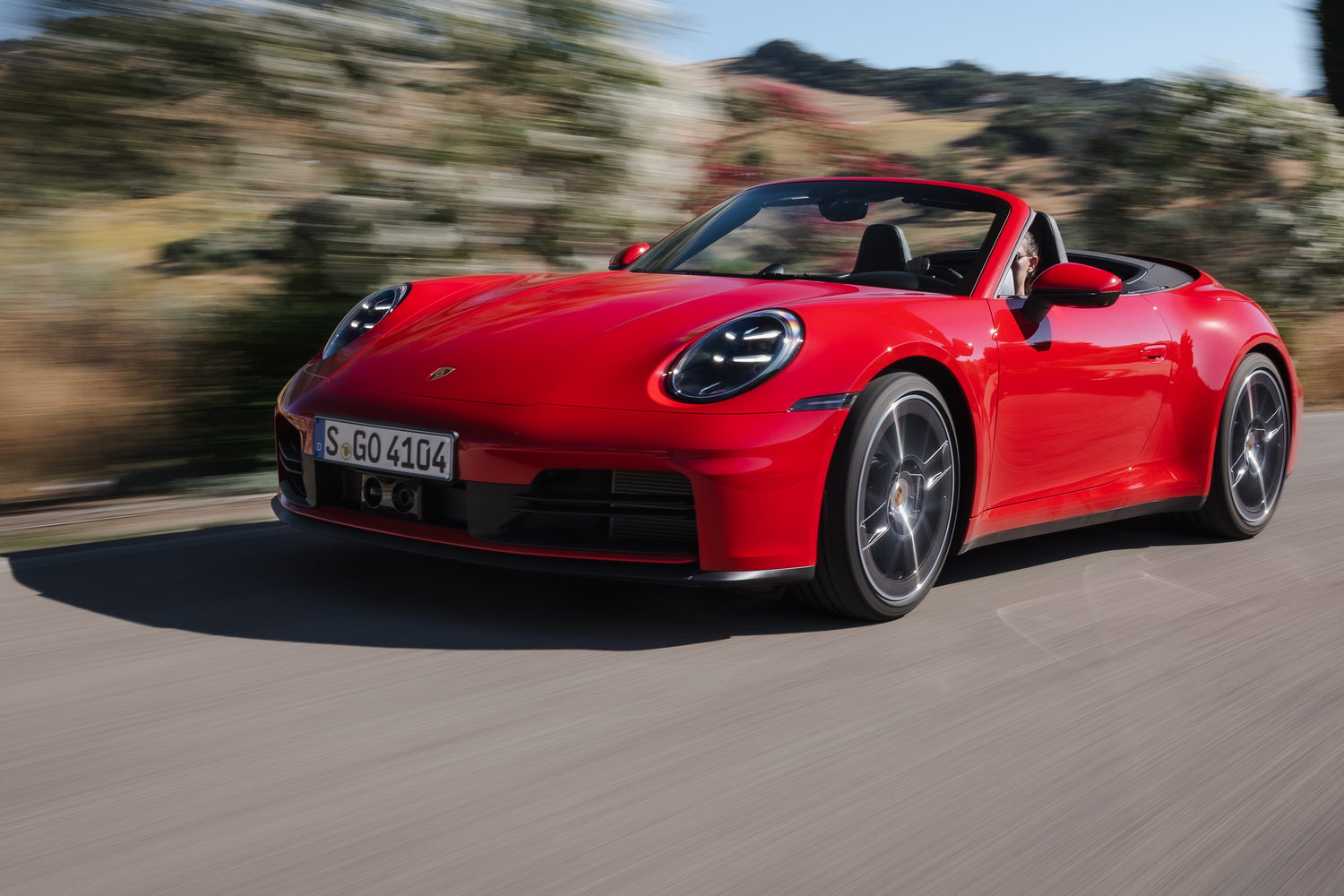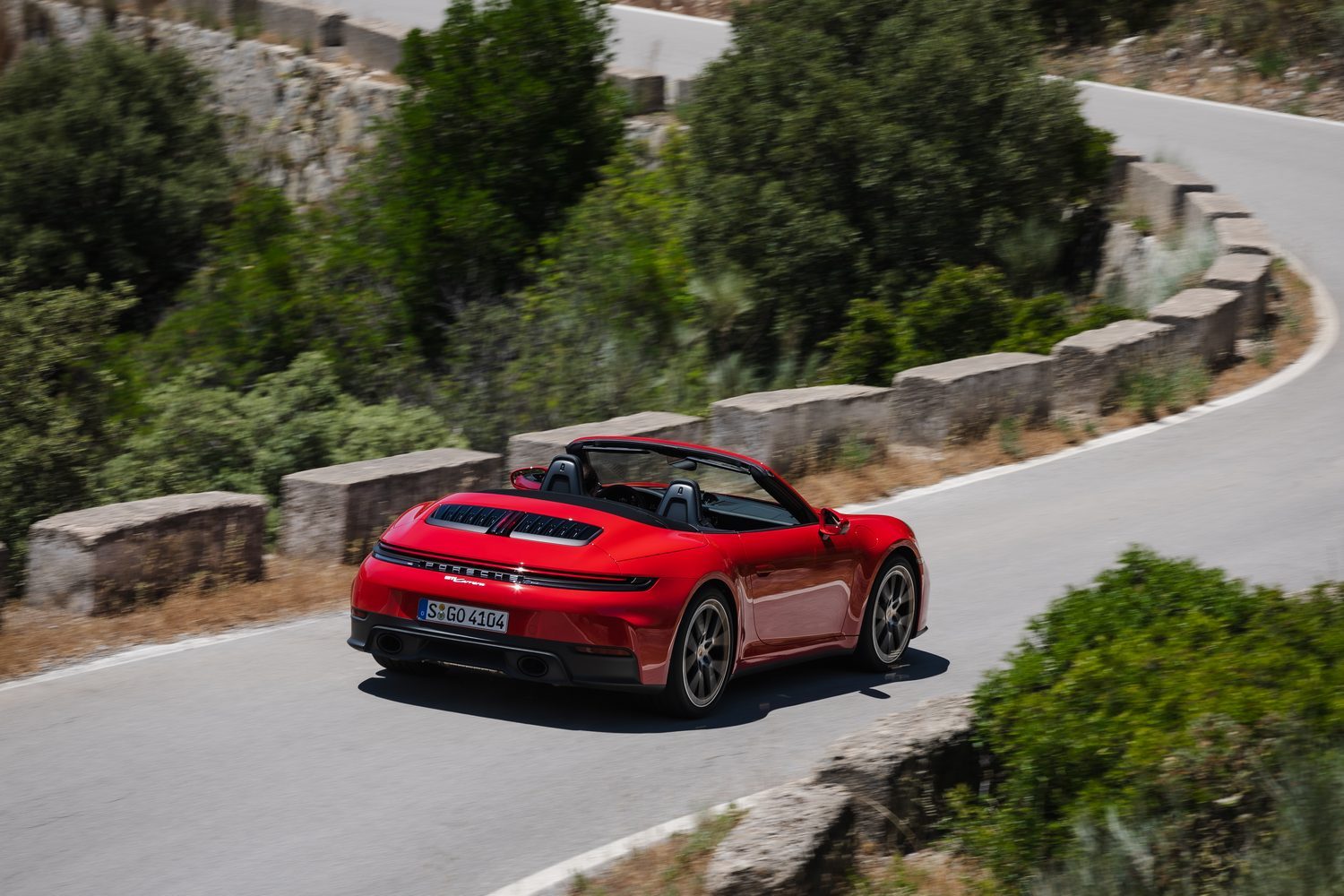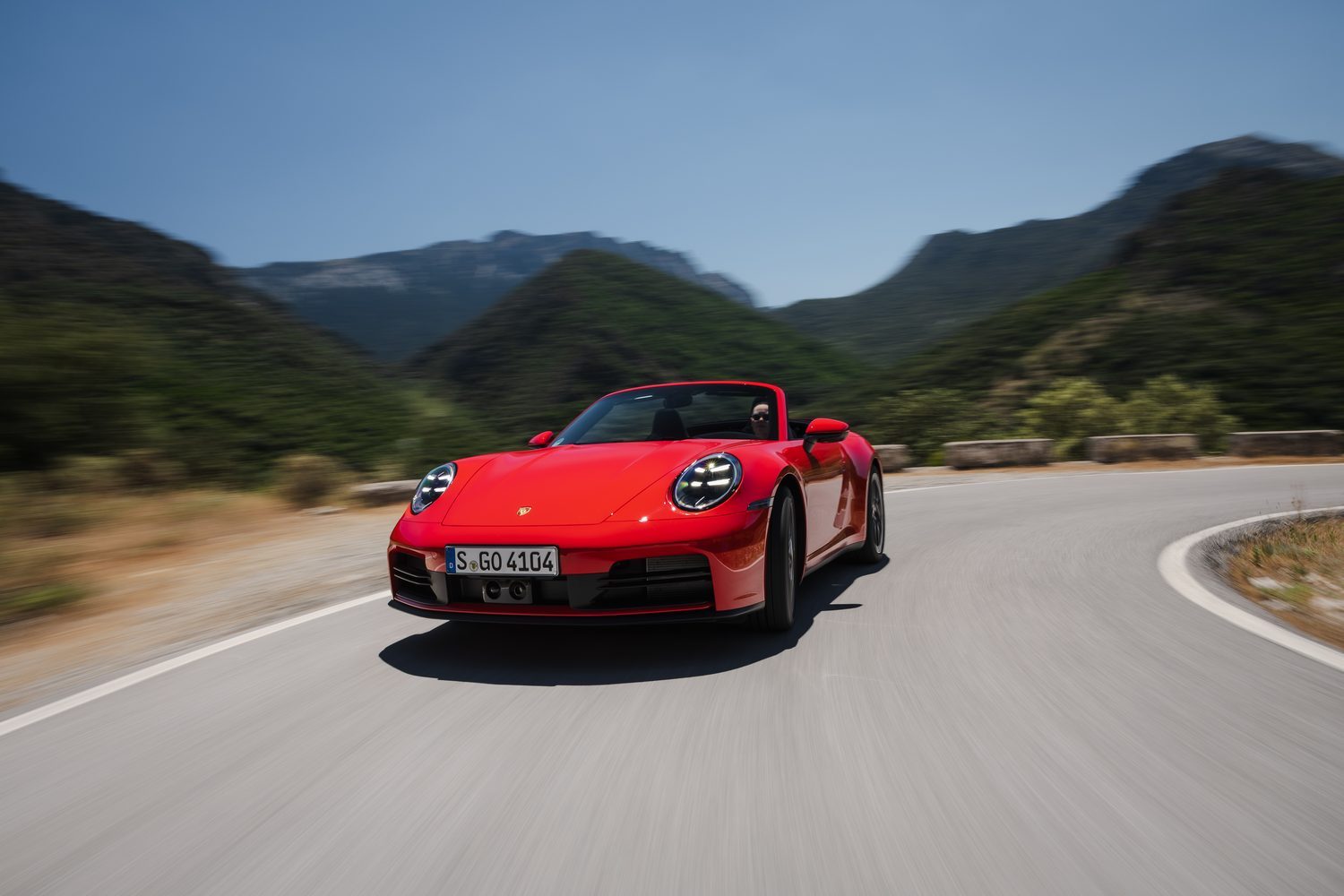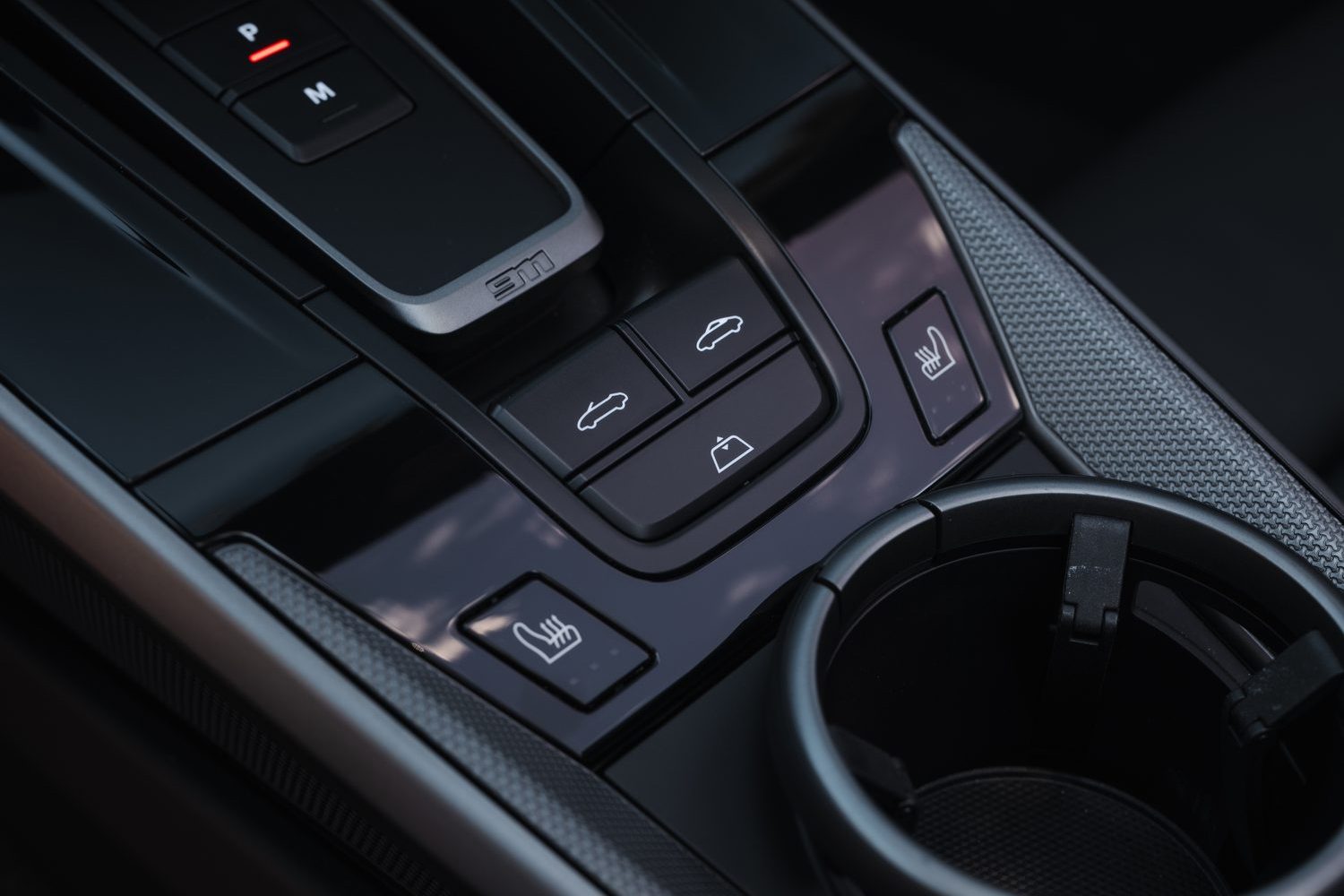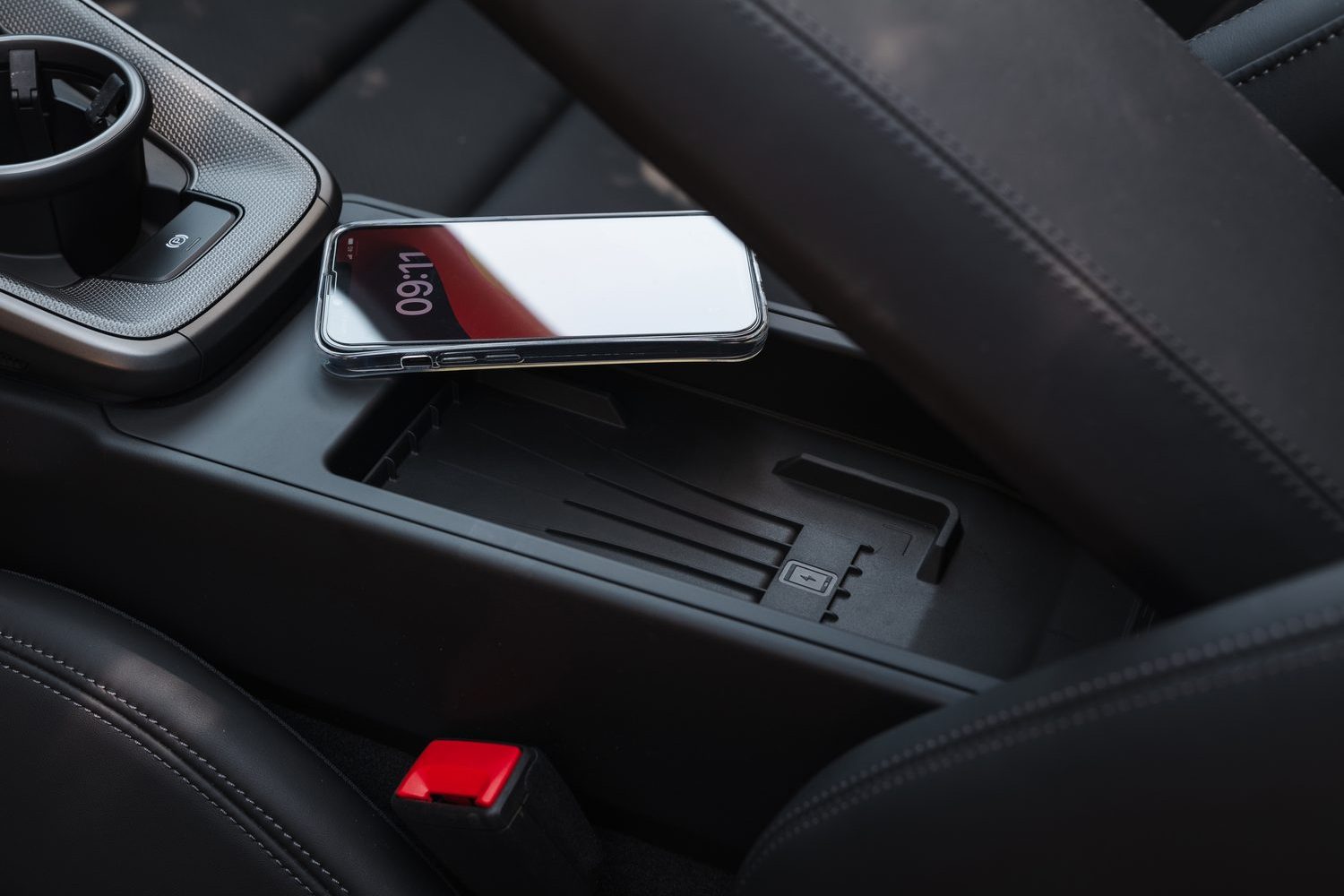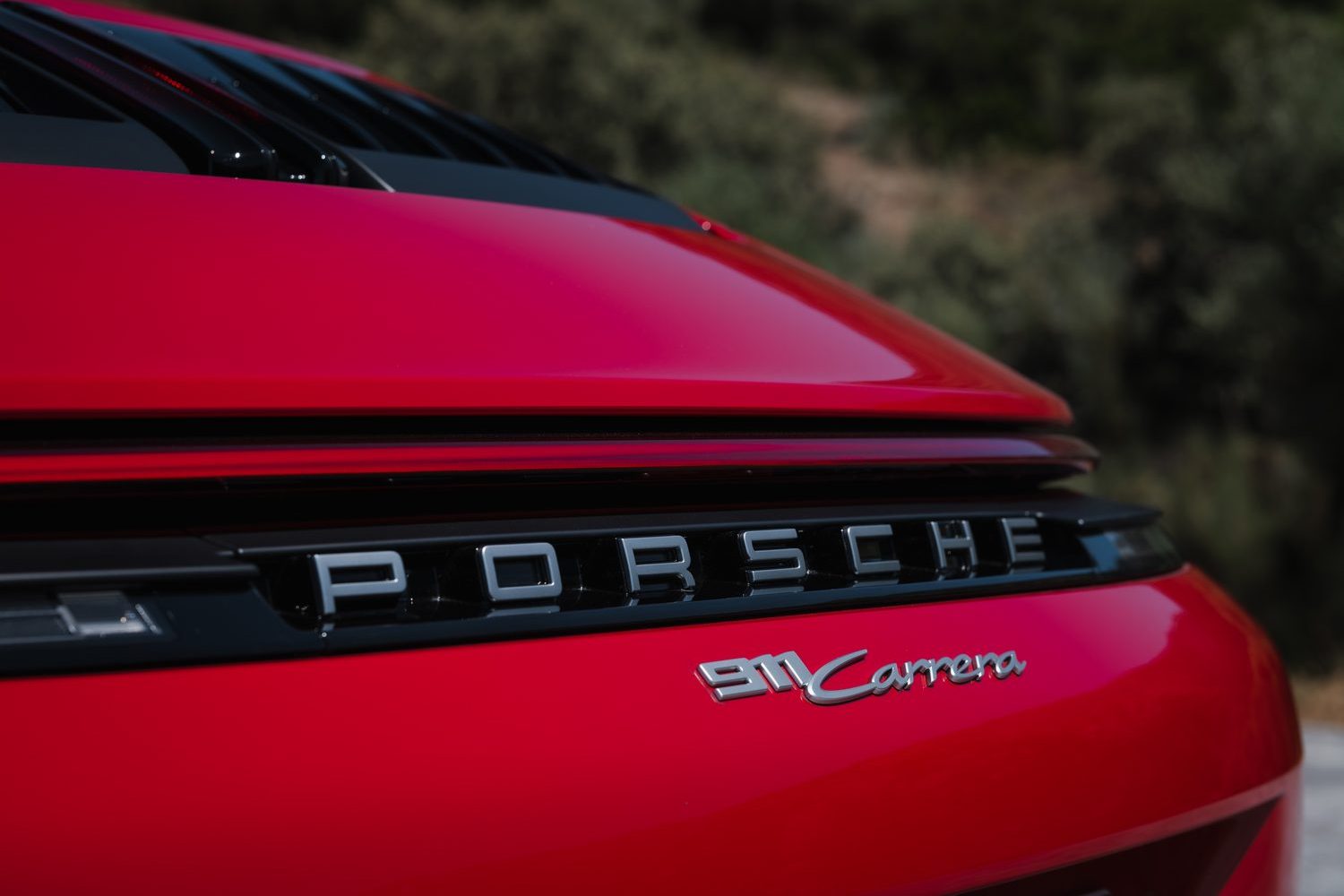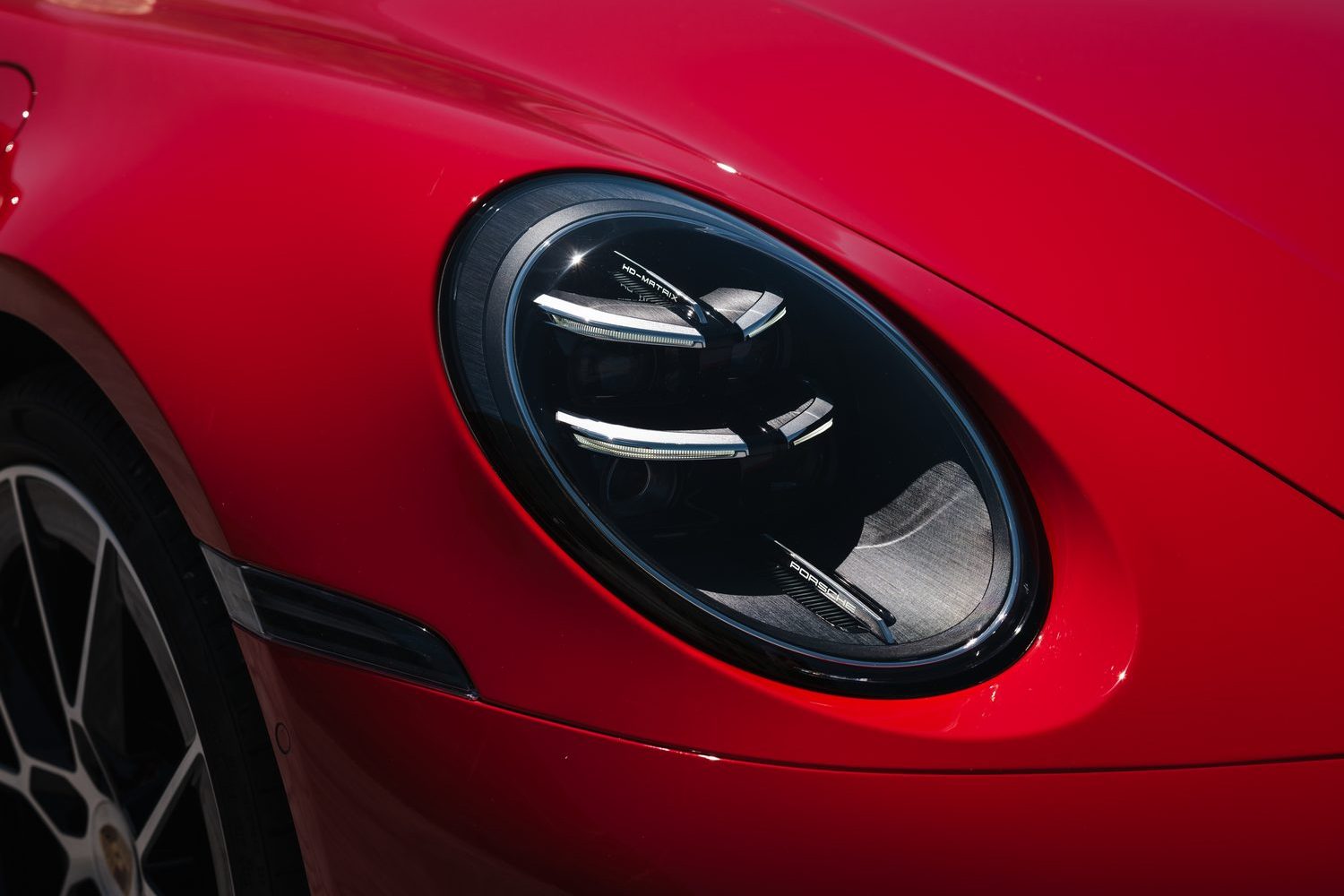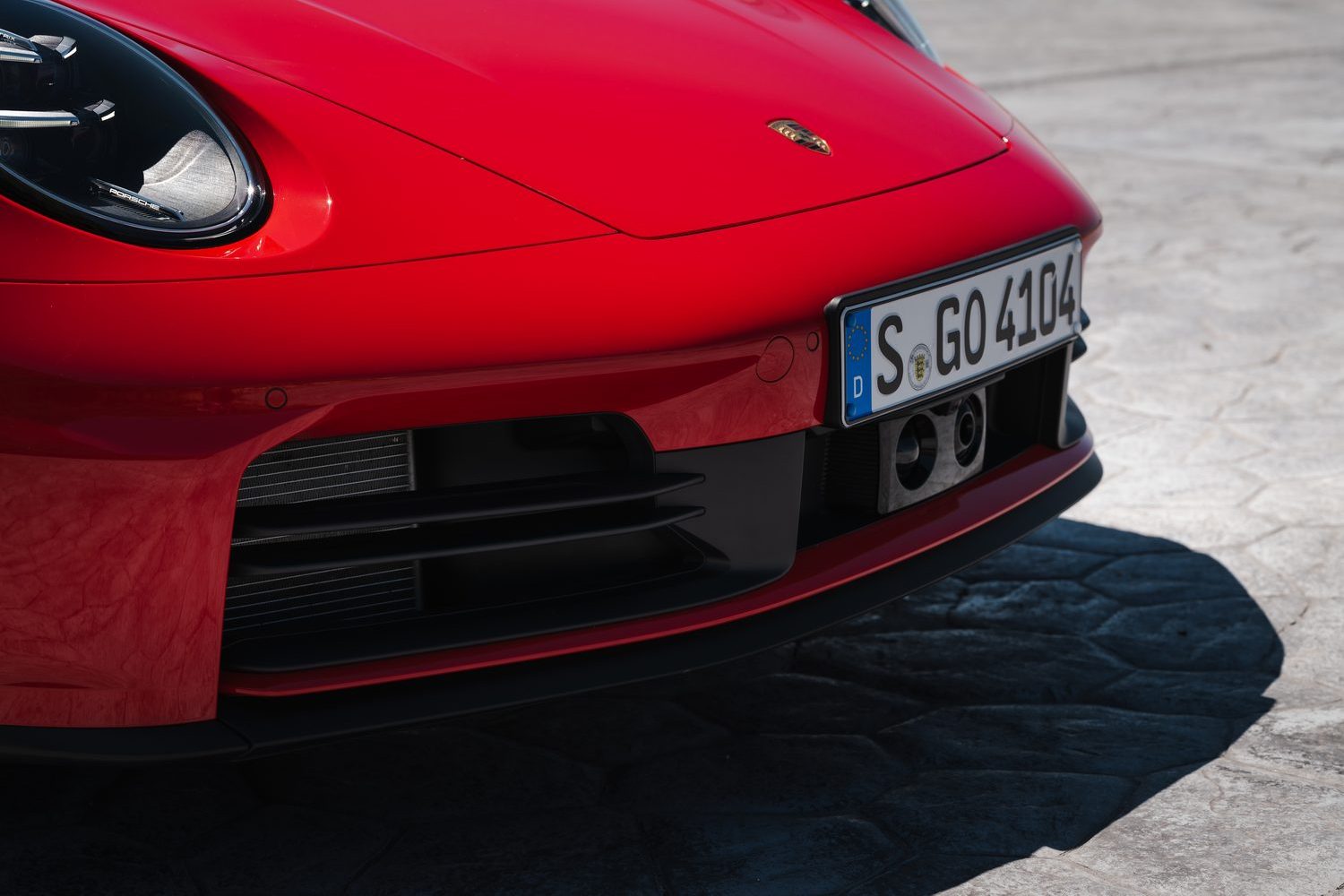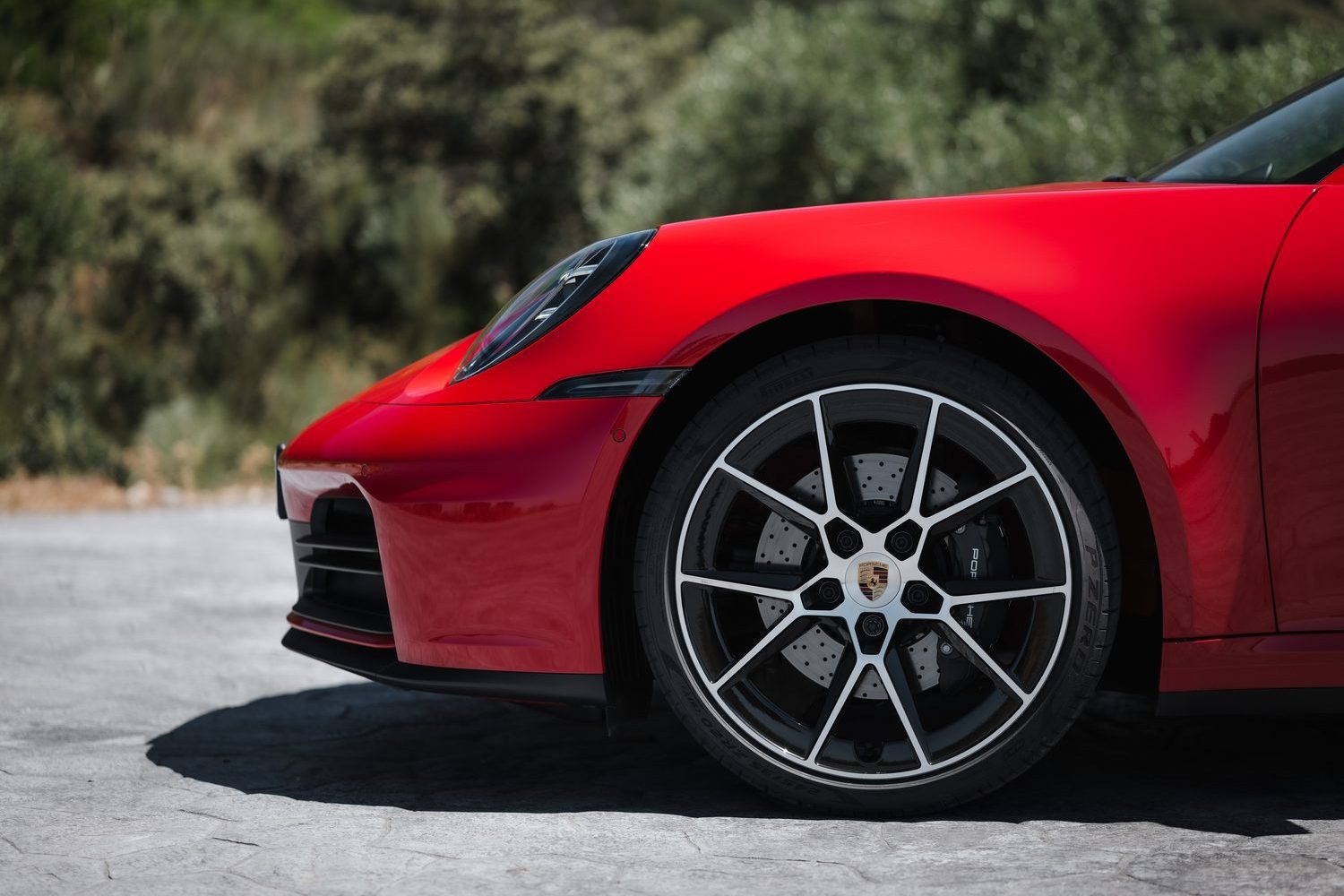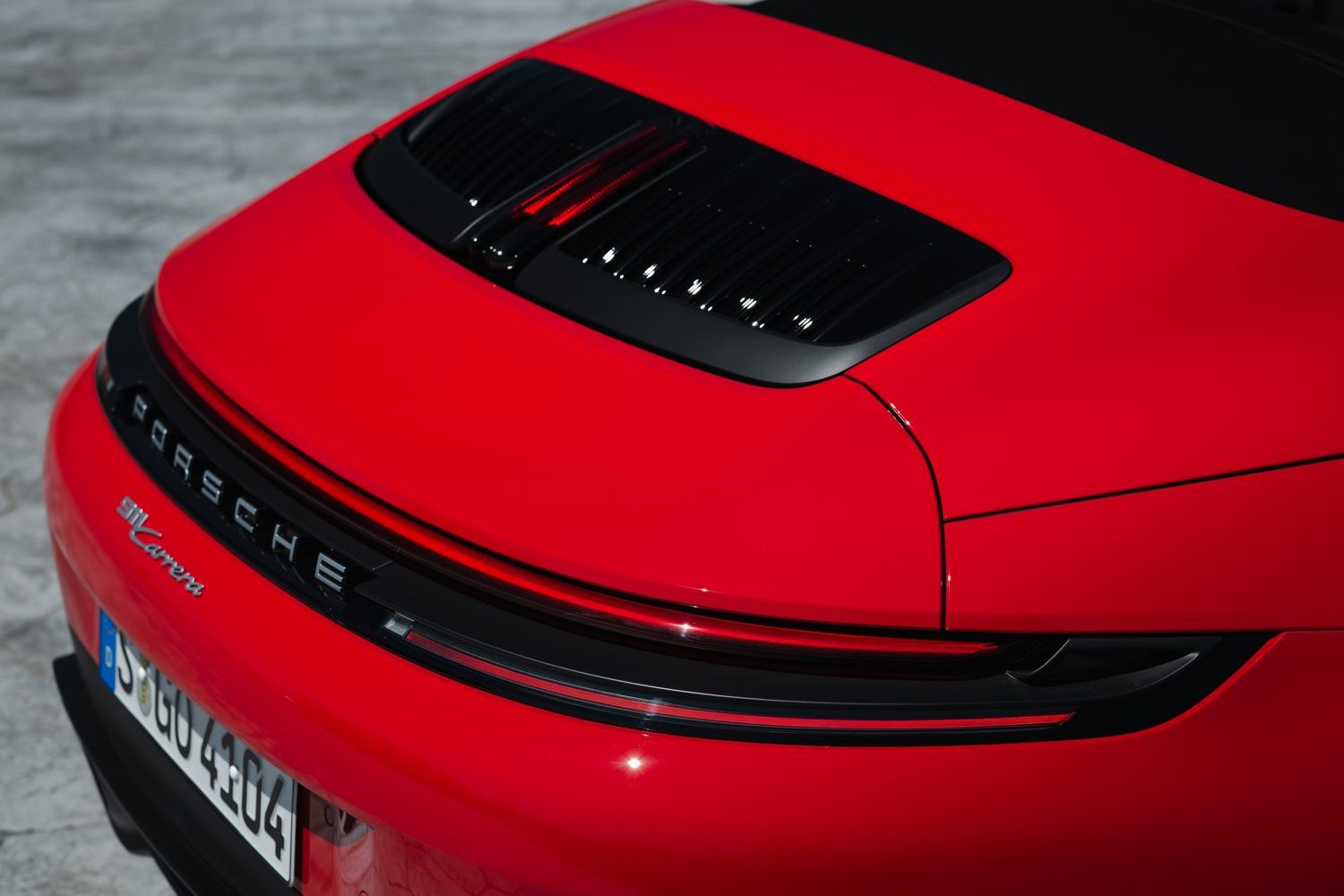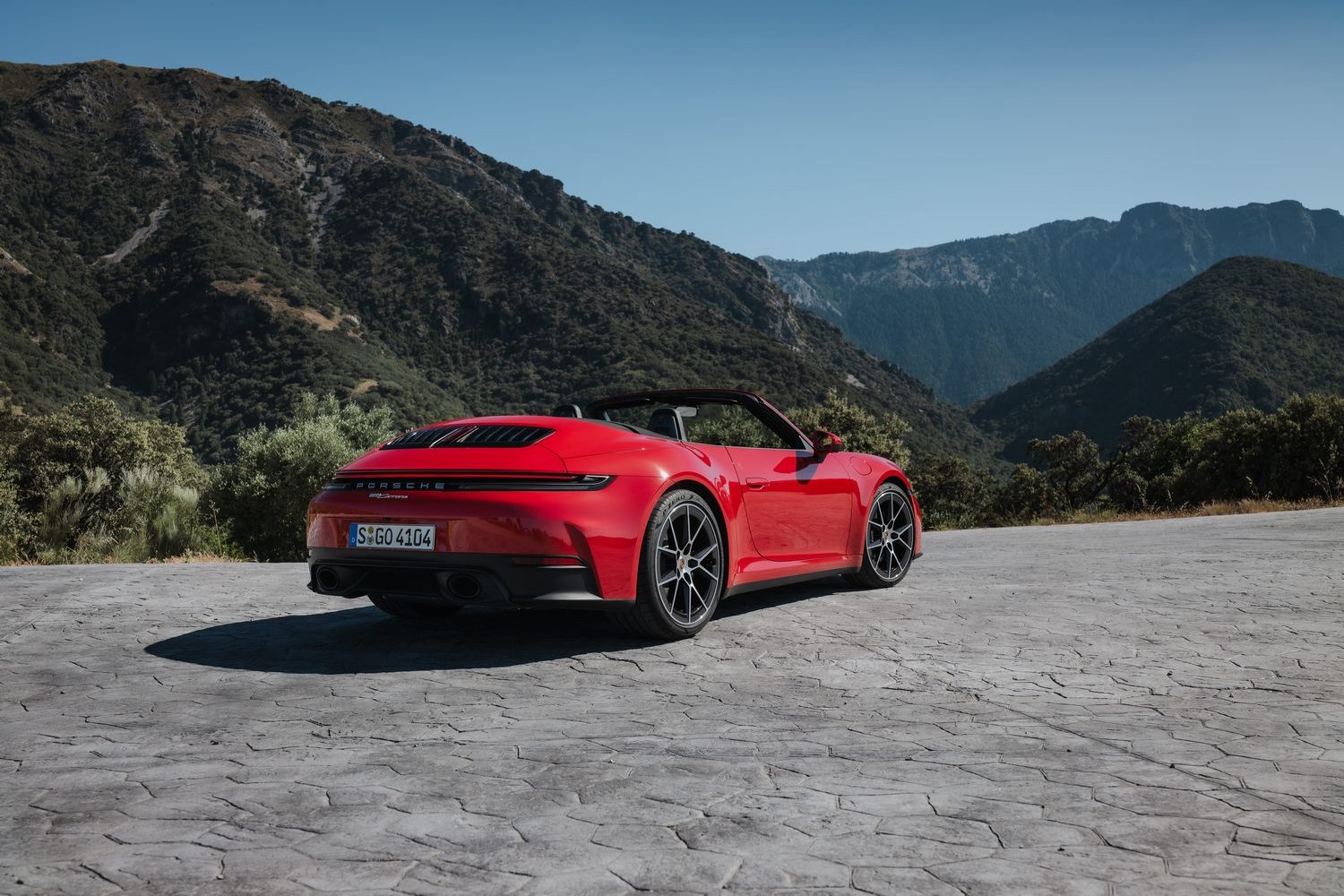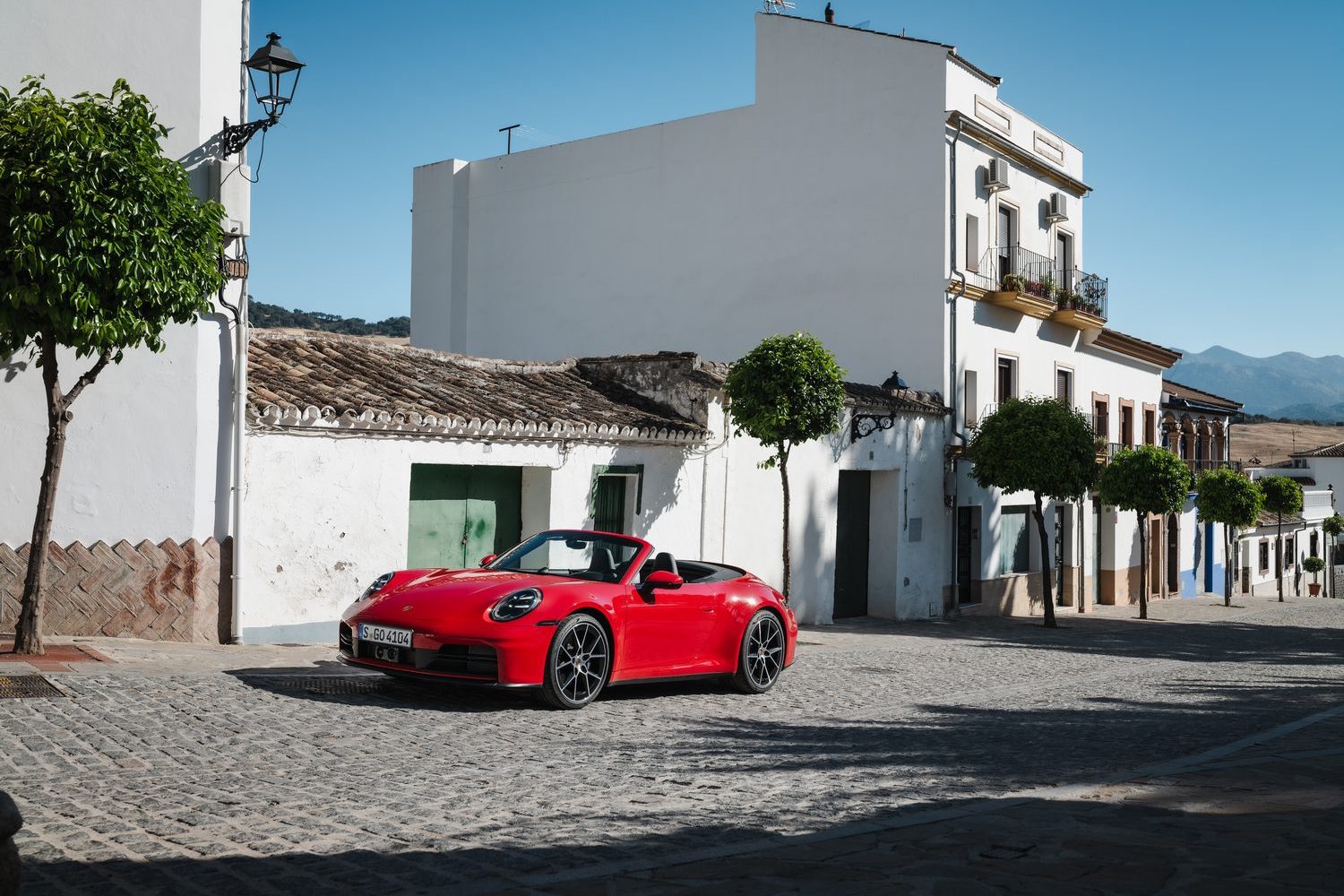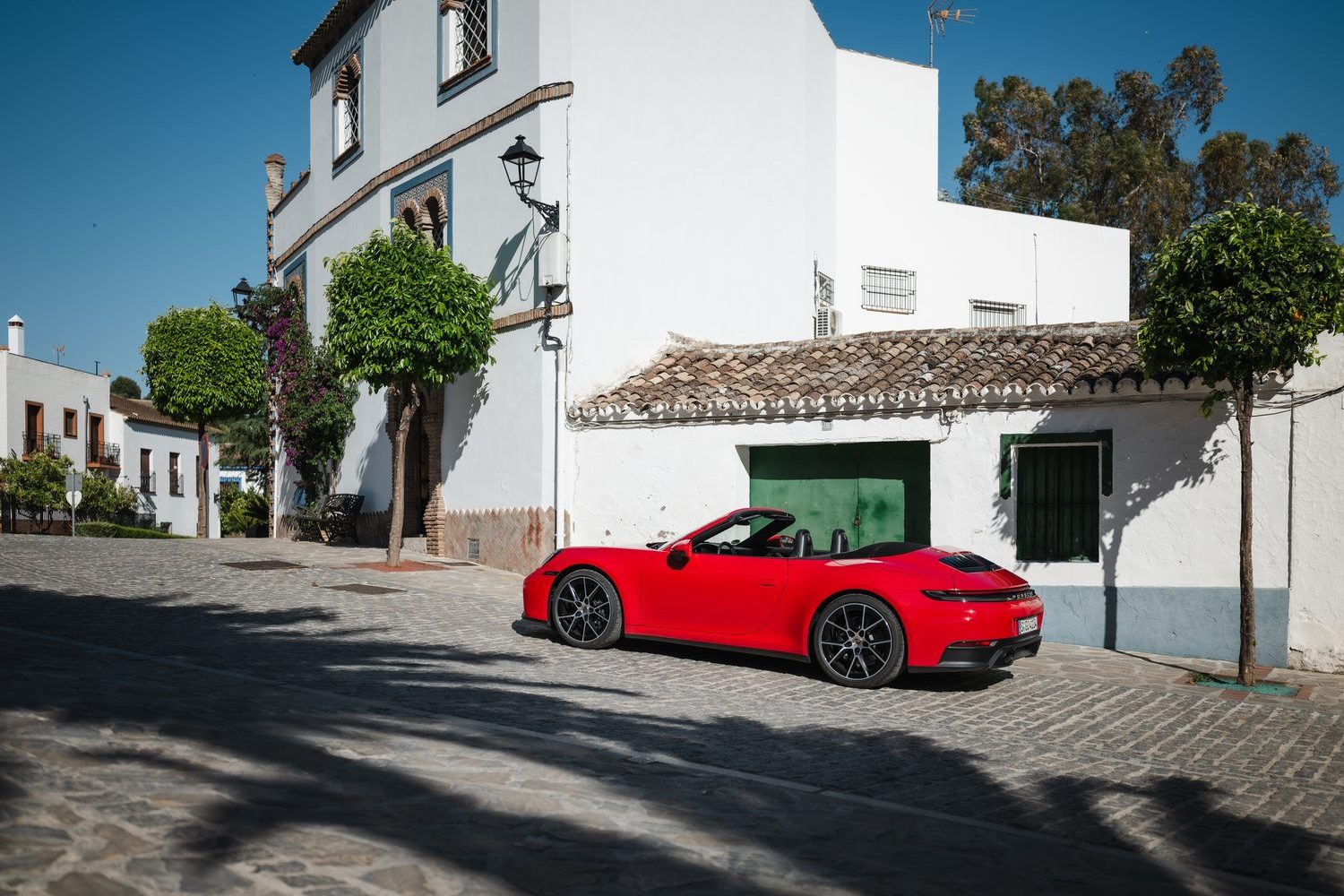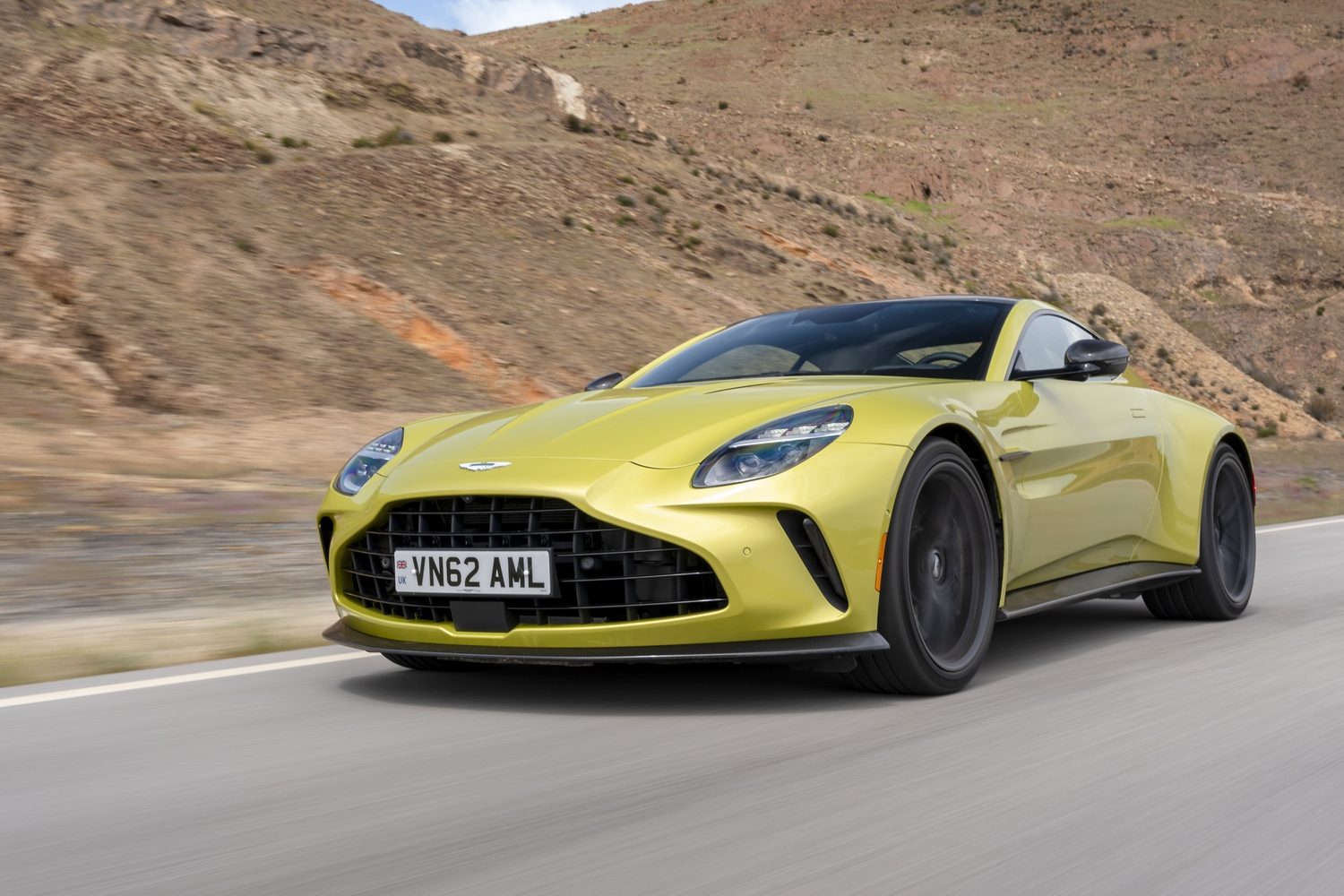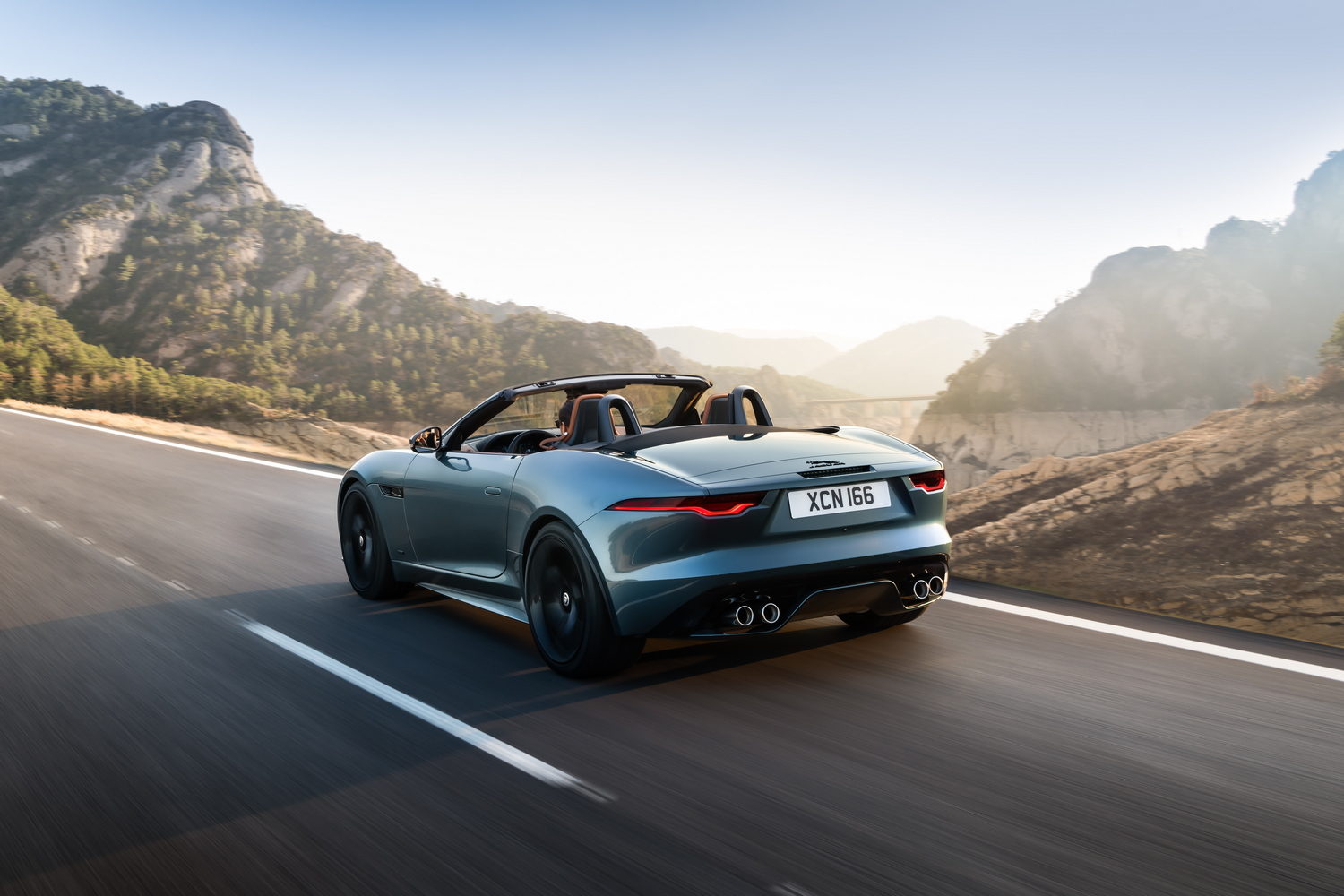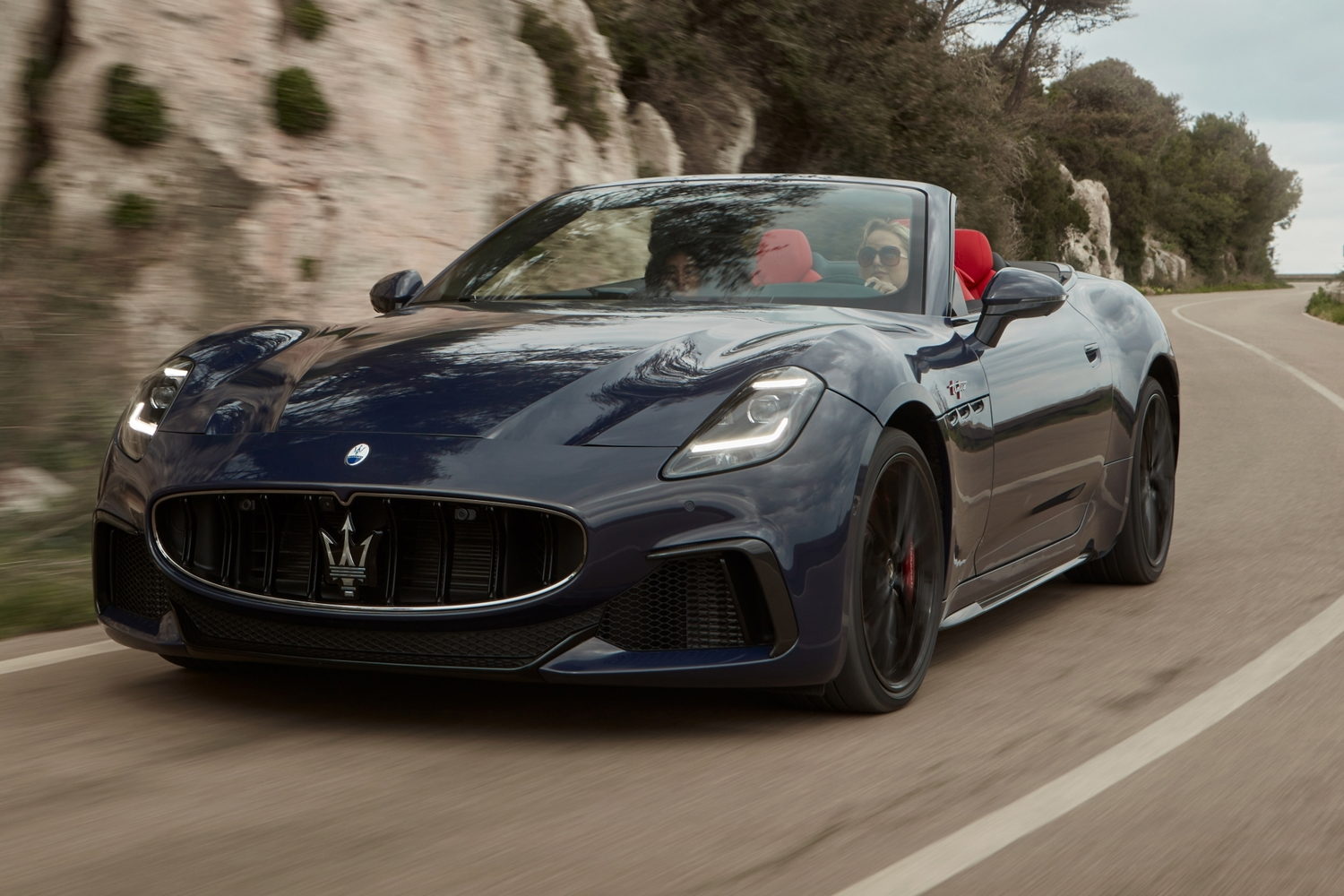The news surrounding the arrival of the new ‘992.2’-generation Porsche 911 was largely and understandably dominated by the introduction of hybrid power for the GTS models. But though it is easy to forget, the entire line-up has been tweaked, and the entry-level Carrera is no exception.
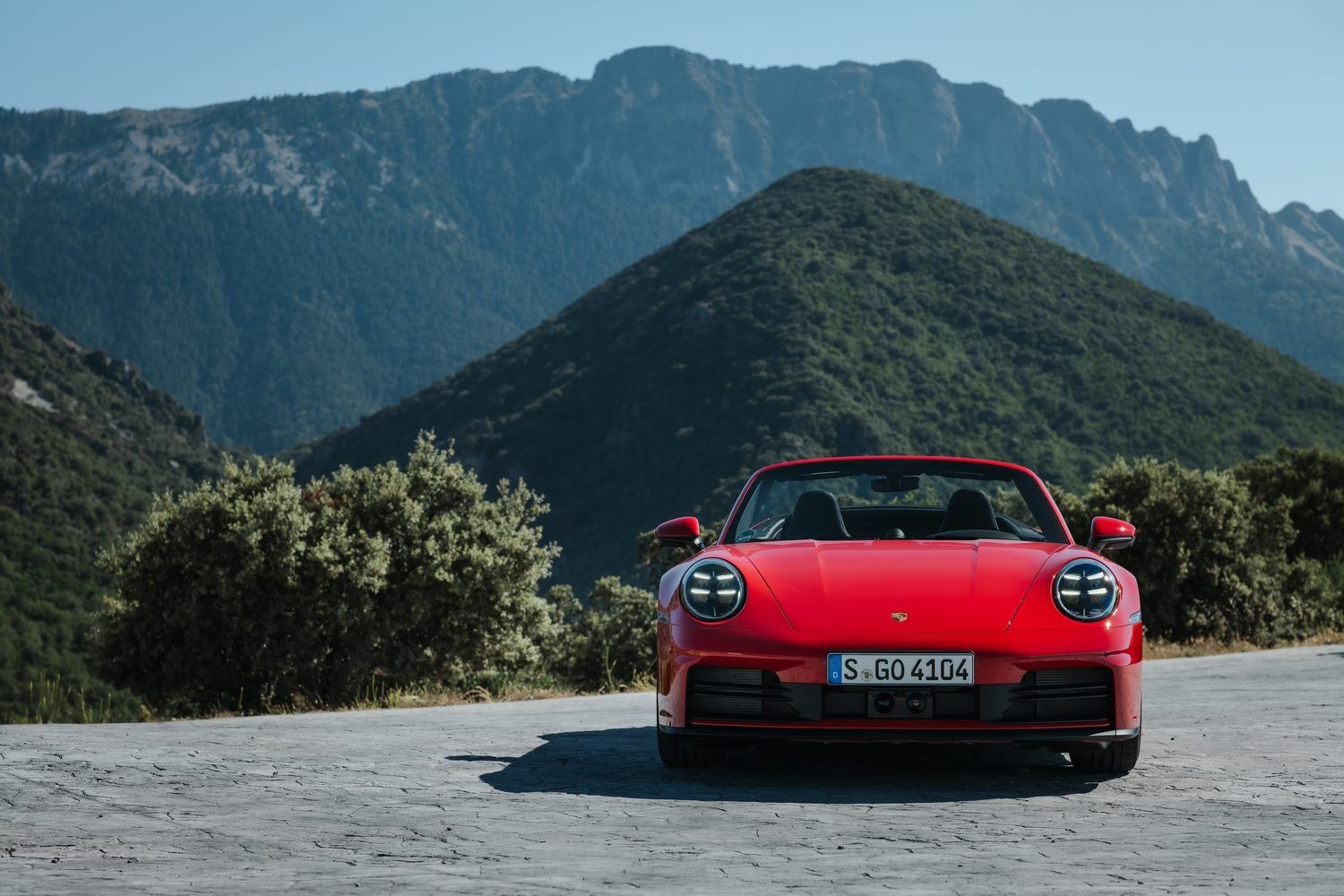
Yes, even the base 911 has been updated with a slightly different look, some new technology and an improved engine, among other minor upgrades. So, is the Carrera Cabriolet still the best open-top sports car in the business? And does it represent the best value of anything in the 911 range? To find out, and to take our first steps with the new-look, latest-generation 911, we took one for a spin at the international launch in Spain.
A look inside the new Porsche 911 Carrera Cabriolet
Porsche hasn’t made massive changes to the 911, and the company is self-aware enough to admit this is essentially just a facelift. So, joining small tweaks to the bumpers, exhausts and headlights are some minor changes to the cabin. Chief among which is the introduction of a new digital instrument display, which sits alongside the main touchscreen, but lives in much the same dashboard as before.
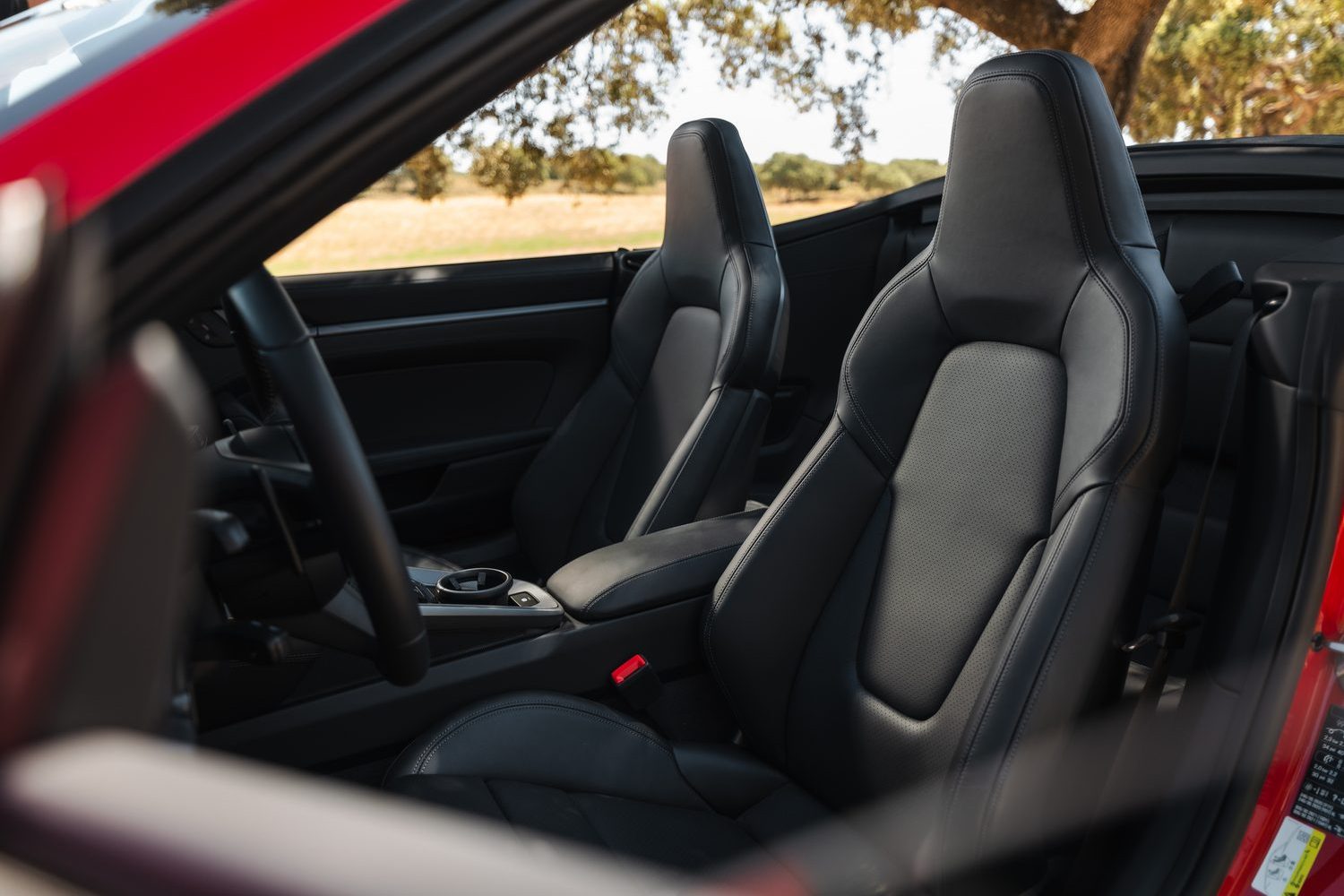
It’s an uncomplicated design, but one that pays homage to other 911 models of the past, and one that’s beautifully engineered. We aren’t massive fans of the toggle gear selector, but otherwise it’s well thought out and generally easy to operate, although the cruise control switchgear is a bit hidden, and good luck finding the button to turn the lane departure warning off without consulting the handbook.
Nevertheless, the Carrera Cabriolet’s cabin is very well made, with pretty much every button or moving part feeling robust and upmarket, while the materials are almost universally first rate. That was the case before, but Porsche has still found room for improvement. For example, among the minor changes is the introduction of a steering wheel-mounted drive mode selector on all 911 models. Previously only for cars with the Sport Chrono Package, the dial was a bit of an afterthought, and it could feel a bit flimsy. But in the new 911, it’s a much more robust design and it feels more upmarket. Though the Sport Chrono Package now includes a bright red ‘Sport Response’ button that cheapens the look slightly.
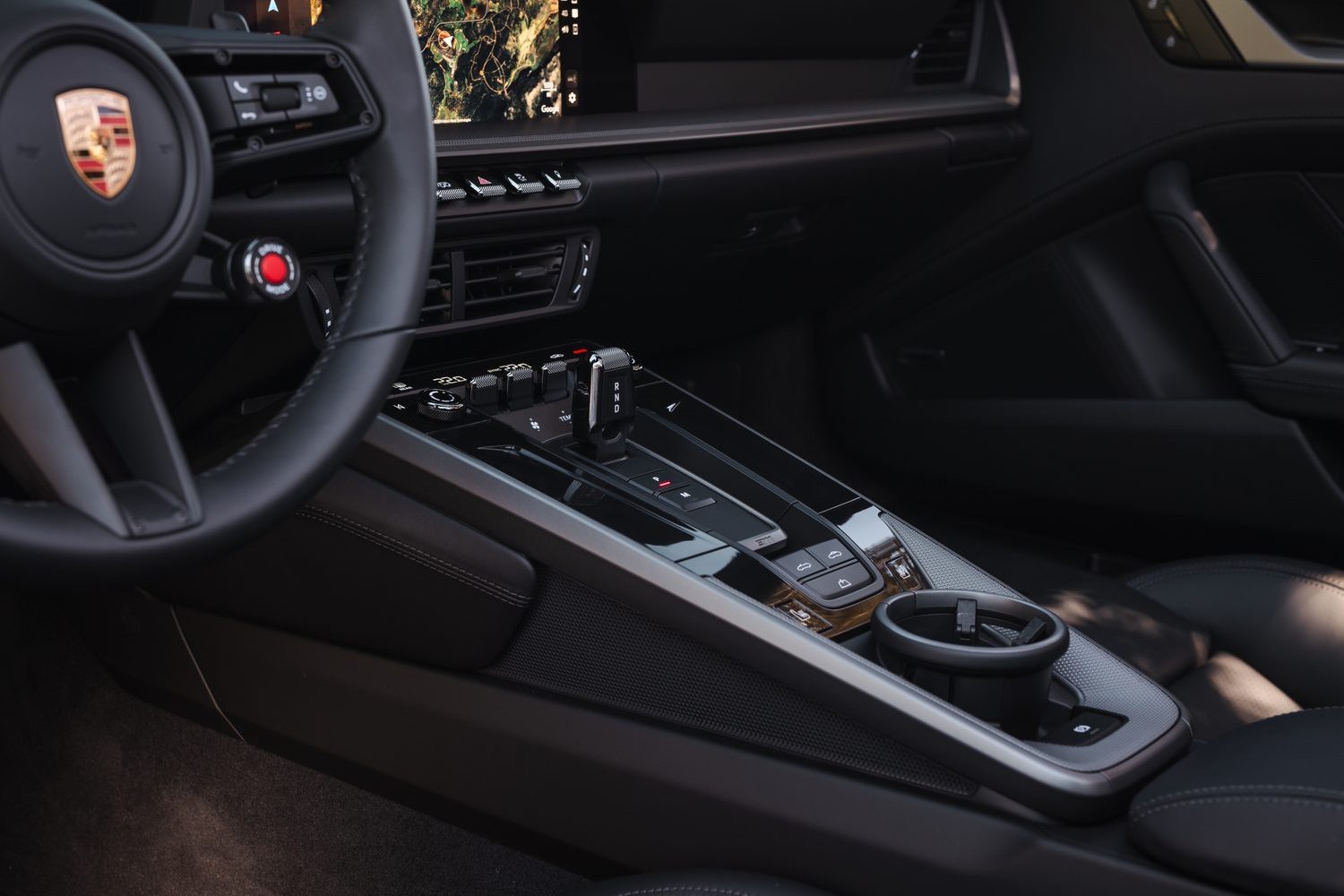
The Porsche 911’s on-board technology
Although the digital instrument display is not the only new addition to the 911’s cabin, it is the highlight, and it’s exceptionally good at what it does. Deemed necessary because the outgoing car’s half-and-half display that combined an analogue rev counter and digital displays either side was too difficult to see through the wheel, the new system is clear, crisp and easy to read, although it lacks something compared with the old car’s neatly honed dial.
Nevertheless, it’s a forward step, and Porsche has made progress with the car’s touchscreen, too. Admittedly, tweaks are minor and relate mostly to the connectivity features, but the screen’s sharpness, logical menus and ease of use make it a great, if very German, system.
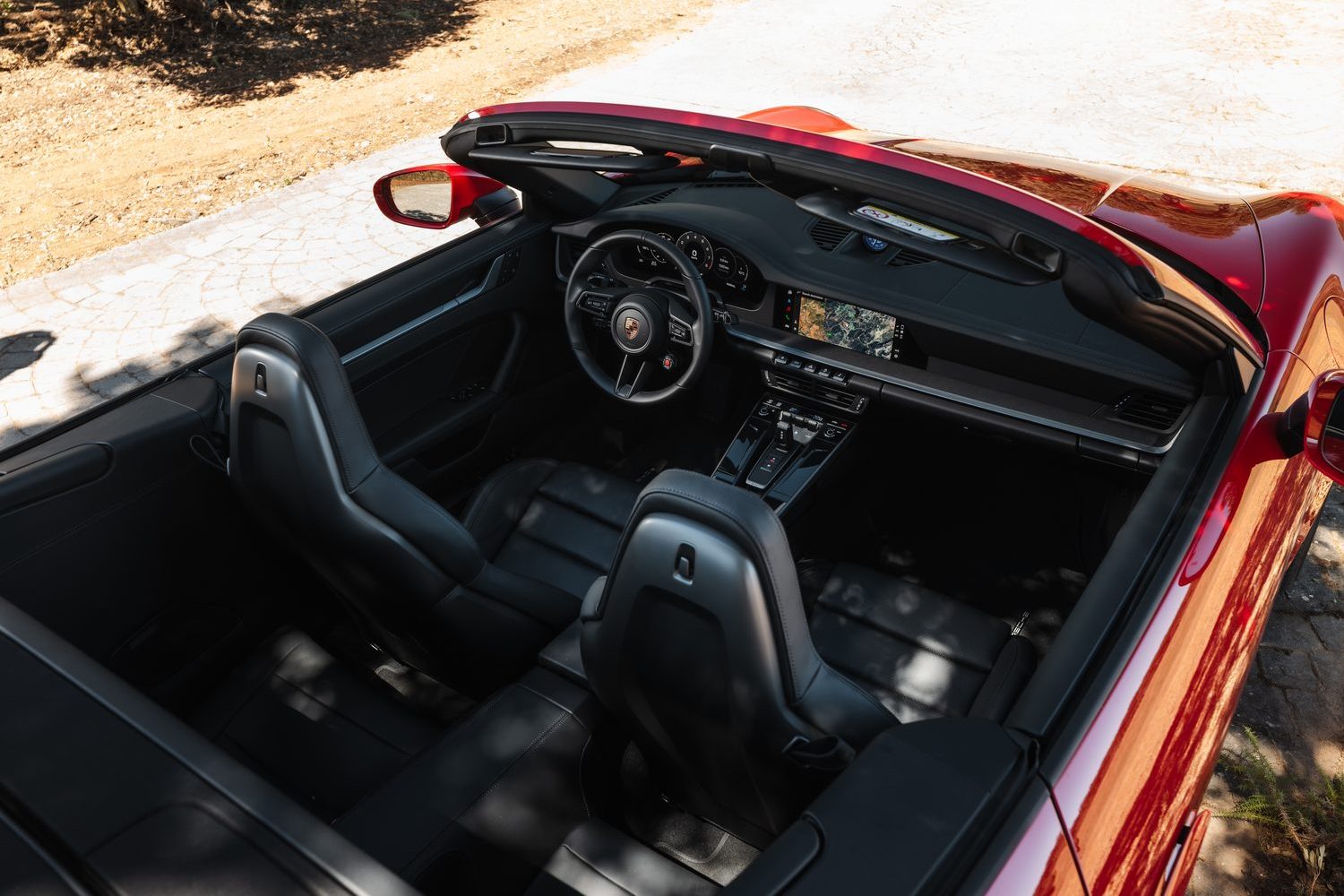
But while technology has played a role in the 911’s cabin, Porsche has also added some new tech outside. We’re unconvinced by the bumper design that makes the car look as though it has eaten Wall-E, but the new headlights are of note. As standard, you get matrix lights that can dip the beam solely in the direction of oncoming vehicles, but the new 911 models are also available with HD matrix tech that uses the light pattern to highlight things on the road, such as the lane in which the car is driving. Apparently making the lane brighter than its surroundings is a subliminal message that helps drivers stay on track.
Not only does the 911 get all the usual safety gizmos, such as autonomous emergency braking that can stop the car if it detects a hazard to which the driver has not responded, but it also gets a really good lane-keeping assistance system that doesn’t panic or get too intrusive, but gently nudges you to stay in your lane. As with all new cars, the speed limit assistance system is irritating and often incorrect, but you can assign a special button on the steering wheel to turn that off easily every time you get in the car.
How fast is the Porsche 911 Carrera Cabriolet?
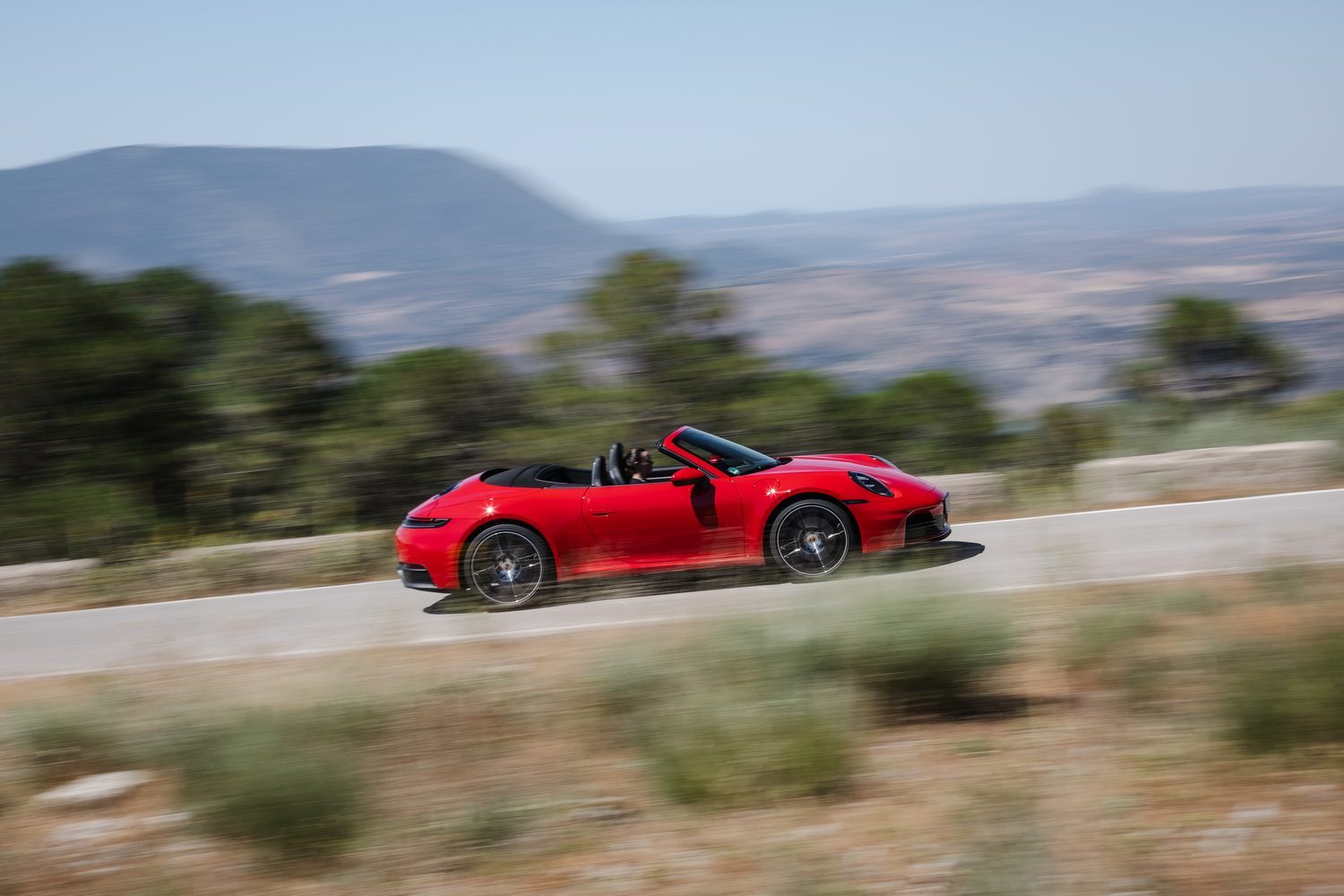
The Carrera Cabriolet doesn’t get the fancy hybrid system of the GTS models, but that doesn’t mean it’s short of power. Or indeed upgrades. Porsche has tweaked the twin-turbocharged engine from the old GTS model, upping the basic 911’s power output to 394hp and sending all that power to the rear wheels via an eight-speed, dual-clutch automatic gearbox.
Unsurprisingly, the result is a quick car, and the new drop-top 911 gets from 0-100km/h in 4.3 seconds in its standard form, before roaring on to a 291km/h top speed, irrelevant as that is. And if you opt for the Sport Chrono Package, which comes with launch control for faster starts and a Sport Plus setting for the engine and gearbox response, you can cut that 0-100km/h time by two-tenths of a second.
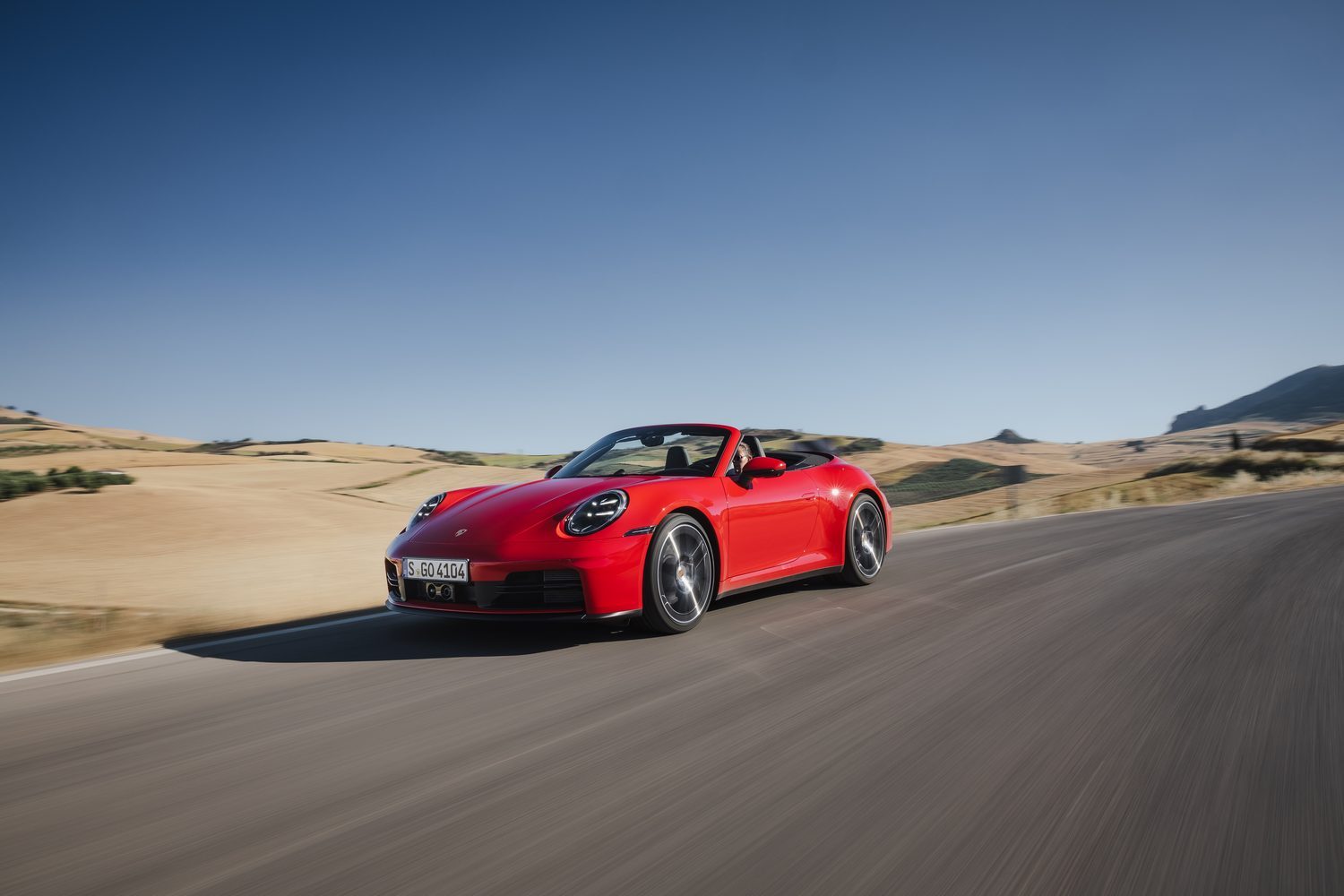
Long story short, the 911 Cabriolet is fast, and it sounds good. The flat-six engine makes a great snarl, and if you go for the optional sport exhaust it comes with two settings that allow you to choose whether you want a (relatively) refined sound or a more animalistic growl.
Unfortunately, the 3.0-litre engine is not especially economical. And though some had once hoped the 911 GTS T-Hybrid would provide an eco-friendlier option in the range, it only really succeeded in adding power while cutting emissions fractionally. So, the Carrera is still one of the most efficient 911 models, and it burns through just over 10 litres of unleaded every 100km, according to the official economy test. Use its performance to anything approaching the maximum and you’ll see that figure rise significantly.
Driving the Porsche 911 Carrera Cabriolet
While performance is important to Porsche, the 911’s success hinges mainly on the way it feels on the road, and the new model starts where its predecessors left off.
As with so many 911s before it, the steering feel is spectacular, with a gloriously smooth action and perfect weight, as well as just the right amount of feedback to let you know exactly how much you’re torturing those front tyres. Combine that with a relatively light body - the car only weighs 1,600kg - and you’ve got something very agile indeed, with rapid responses to those steering inputs.
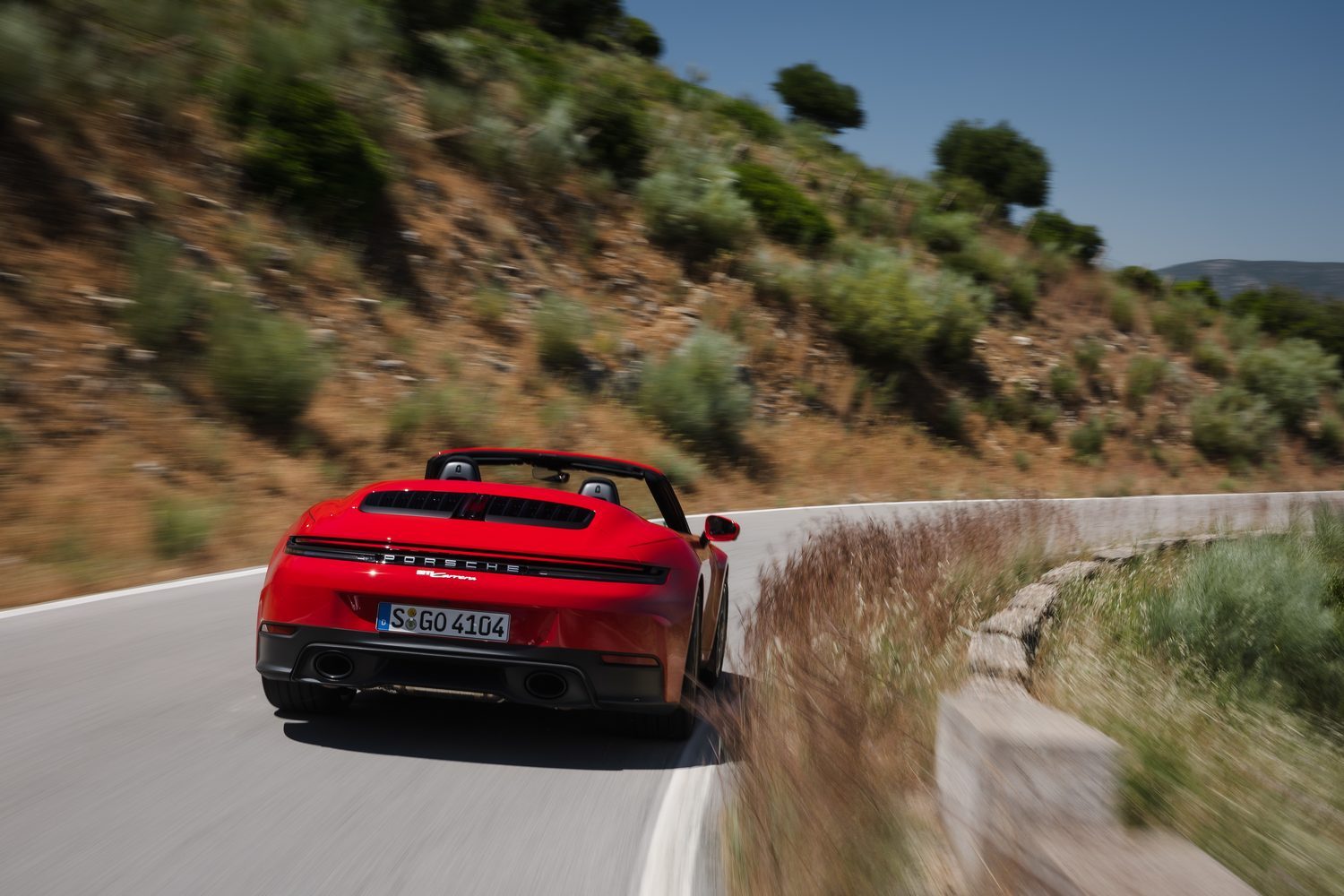
Better still, the rear-wheel-drive, rear-engined layout should make the car feel tail-heavy, but Porsche has engineered that out to give the 911 spectacular balance. Yes, the rear will swing out if provoked - and you can have great fun when it does - but the huge amount of grip makes it feel planted and the responsiveness allows you to rotate the car using the throttle.
None of this would be possible without great suspension, though, and the 911’s set-up is exemplary. Every model comes with two-setting adjustable damping, which means you can choose between a softer, comfort-orientated level or a more performance-orientated one. While the temptation is to go straight for the stiffer setting, it really isn’t necessary, because the 911’s body control is incredibly good anyway. There’s a bit of lean, but not too much, and what there is just helps you to feel where the car’s weight is.
The only time that lean becomes an issue is if you brake hard in anything other than a dead-straight line, when the back will attempt to overtake the front, but even then, it’s manageable. And it’s only an issue you’re likely to encounter on a track, which is not the natural habitat of a Carrera Cabriolet. And anyway, if you were on a track, you’d opt for the stiffer suspension setting that keeps things even more stable.
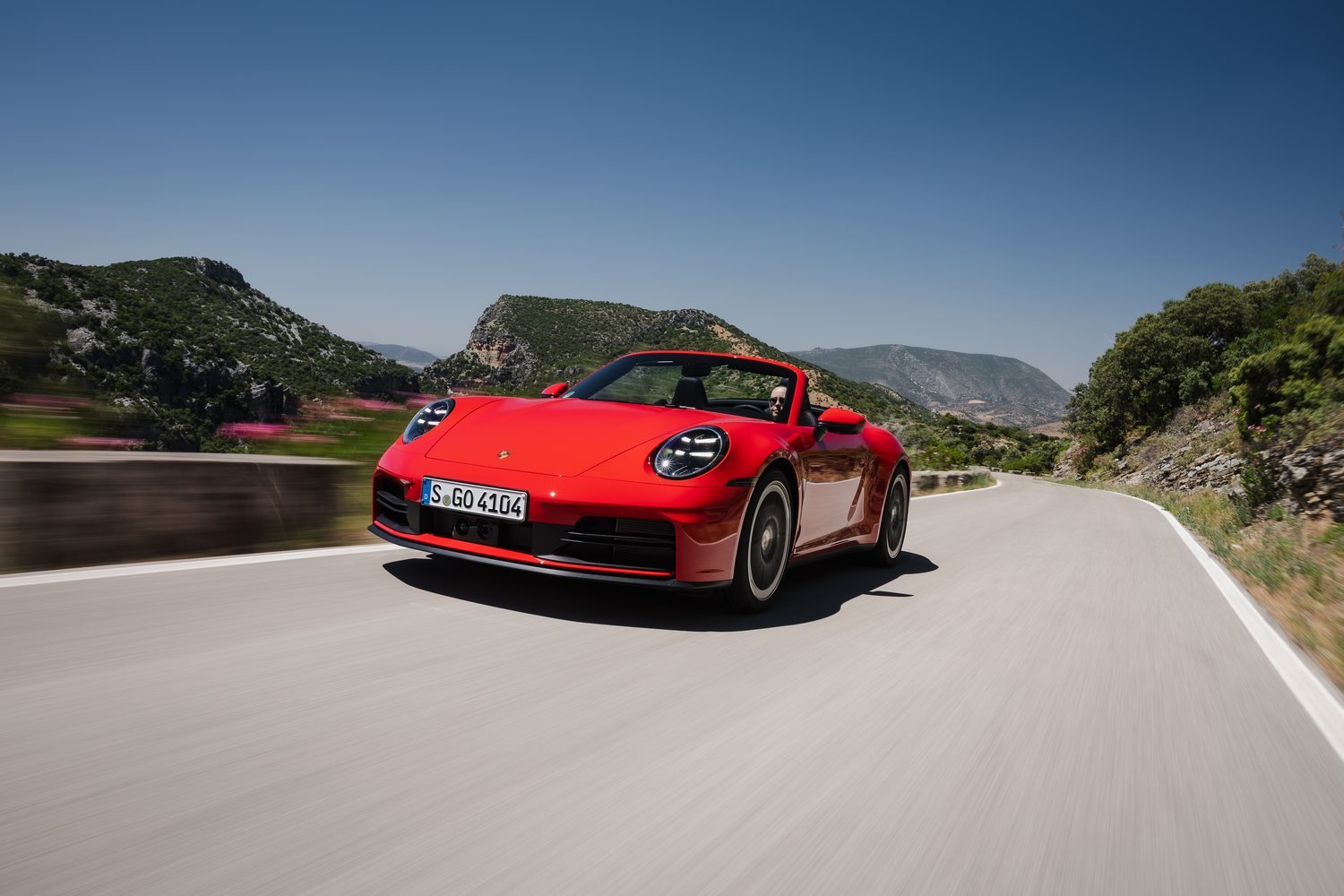
It does make things less comfortable, though, so it isn’t worth using on the road. The outgoing 911 was quite stiff even in Carrera form, but the new model feels a fraction more supple, which is a nice improvement, though putting the suspension into a sportier mode undoes all that good work.
An honourable mention should also go to the gearbox, which is spectacularly good in automatic mode and monstrously quick to change in manual mode, with the driver using shift paddles to switch ratios. You don’t really need to start tugging away at those paddles, though, because the system always seems to know exactly which gear to be in at any given moment, and it seldom makes an error.
How much will the Porsche 911 Carrera Cabriolet cost in Ireland?
The new 911 Carrera range starts at €195,840, but the Cabriolet commands a premium of almost €20,000. At €214,365 it isn’t what you’d call cheap, but at least it comes with plenty of standard features. As well as almost 400hp, it gets the digital instrument display, touchscreen infotainment system and climate control, as well as a reversing camera and parking sensors. And there’s an enormous options list that allows you to add pretty much anything you want to the basic specification. Being from Porsche, however, they all cost a fair bit.
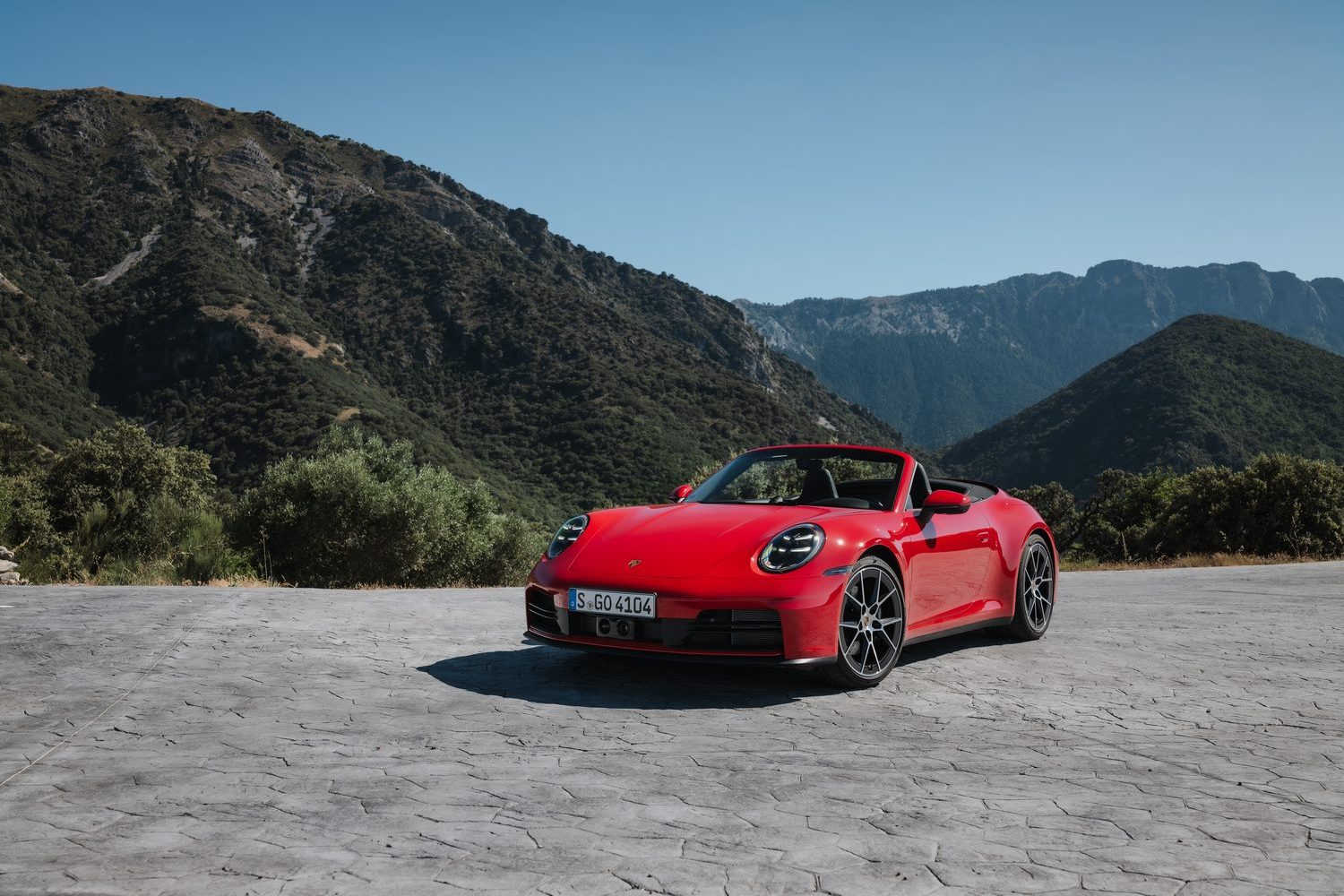
The reasons you’d buy a Porsche 911 Carrera Cabriolet
It might be the cheapest (well, least expensive) convertible Porsche 911, but the Carrera Cabriolet is still a stunning sports car. Supple, agile and blessed with ample power from that gurgling 3.0-litre flat-six engine, it’s a favourite among customers. And if you’re pondering whether to choose the Cabriolet or the Coupe, rest assured there’s truly little difference in the way they both drive, but the Cabriolet adds a sense of open-air drama that makes the 911 even more beguiling.
Ask us anything about the Porsche 911 Carrera Cabriolet
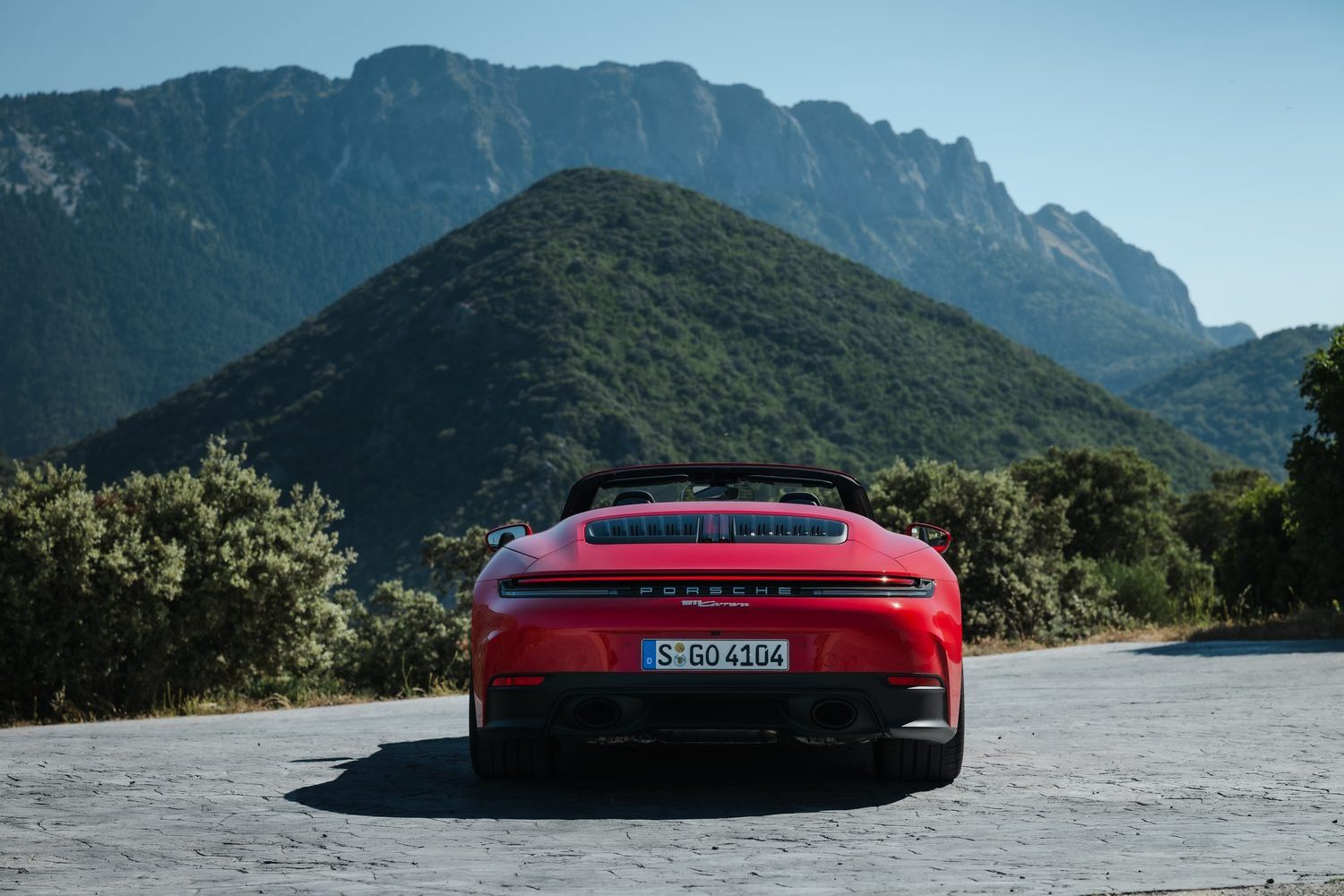
If you want to know more about the Porsche 911 Carrera Cabriolet, simply avail of our free Ask Us Anything service. Our experts are just a few taps away and will help you with any queries you might have about the Porsche 911 or any other car on sale in Ireland today. Find out more at our Ask Us Anything page.

